Construction
Defects, Construction Claims, Engineering, Property & Casualty
Investigations, Assessment, Site Investigation, Remediation, Litigation and Indoor-Air
Expert Engineers
Bill Stephan, PhD, PE, CIH, CHMM, JD, MBA
Principal Engineer
P.O. Box 520
Tenafly, New Jersey 07670-0520
Phone: (973) 897-8162
Fax: (973) 810-0440
__________________________________________________
Firm Overview
The
engineering and forensic firm of Metropolitan Forensics and Consulting Engineering and Environmental Services was established for the purpose
of providing a high value service to the insurance industry and to the
insured companies or individuals. Our founding principal (Bill Stephan)
is a licensed professional engineer in several states, including, New
Jersey, New York, Pennsylvania, and Delaware.
We
specialize in the in-situ remediation of petroleum and chlorinated
spills, the defense of liability claims, the investigation and defense
of first or third party insurance claims and the handling of subrogation
claims. We are also experts on oil and gas energy sector issues
(design, investigations, construction oversight), renewable energy
sector (wind turbines, solar panels, biofuels, etc), vapor intrusion
evaluation, vapor phase
and transport and in design on vapor mitigation systems. Additionally,
we offer forensic engineering services, including age-dating of
contaminant releases, construction defects, oversight, evaluation of
remedial alternatives, sub-slab ventilation system design and
installation. The list of our core services is:

- Cause and Origin Investigations
- Construction Failure Analysis (Residential, Industrial and Commercial)
- Structural Integrity Evaluation
- Site Investigation
- Tank removals and tank installations; licensed and insured to perform entire UST work
- In-Situ Remediation of Soil and Groundwater
- Vapor intrusion, indoor air evaluation and mitigation
- Causation
- Forensic Investigations (age-dating)
- Oversight
- Review of Remedial Action Work Plans
- Reserve Estimation
- Cost Allocation
- RAWP Preparation
- Site Remediation
- Cleanup Level Development and Negotiation
- Subrogation
- Expert Witness/Litigation Support
- Licensed Site Remediation Professional (LSRP) Services
- Construction Claims (Delay, Differing Site Conditions, Loss of Productivity, Acceleration, and others)
Additional Specialty Service Areas
Age Dating
Boilers & Burners
Bridges
Building Codes
Building Inspections
Construction Accident
Reconstruction
Construction Defects
Construction Delay Claims
Construction Surety Claims
Construction Disputes
Construction Differing Condition Claims
Construction Oversight
Construction Management
Construction Acceleration Claims
Construction Failures
Construction Injuries
Contractor Performance Issues
Corrosion
Defective Designs
Defective Roadway Design
Evaluations
Earthquake
Electrical Accidents/Injuries
Electrical Equipment Failures
Electrical Fires
Elevators, Escalators
& Conveyors
Embedded Software Hazards
& Analysis
Equipment Failures
Errors and Omissions
Explosions
Failure Analysis
Fire
Fire Codes
Fire Protection Systems
Fire Suppression Systems
Flood Damage Assessment
Foundation Systems
Gas Systems
Hailstorm damage
Heating & Ventilation Systems
Heavy Construction
Highway/Roadway Design
Human Factors
Indoor Air Quality
Laboratory Services
Ladders, Scaffolding Falls
& Failures
Lightning
Mechanical Defect Evaluations
Metallurgical Age Dating
Mold Causation
Natural Disasters/Weather
Related Issues
Nuclear Energy
Occupational Hazards
& Illness
Piping
Playground Equipment Injuries
Plumbing
Product Failures
Roofing Problems & Failures
Safety Codes
Safety & Human Factors
Engineering
Scalding
Scene Mapping and Photographs
Sick Building Syndrome
Sports Equipment Injuries
Standardized Codes
Steam Systems
Subrogation Issues
Transportation Issues
Trips, Slips & Falls
Underground Storage Tanks
Utilities Expertise
Vibration
Water Damage
Windstorm
Mission Statement
Our
mission is to work as an extension of our clients to expeditiously
achieve the most economically favorable resolution of claims on their
behalf and on behalf of their insured. We have developed and will
continue to create new solutions to the technical problems and issues
which are facing the insurance industry and the insureds today.
Metropolitan
provides forensic engineering work (age-dating or fingerprinting), site
remediation, auditing, cost control and litigation support services to
insurance carriers, their insureds and to private or public companies.
In its risk management role, examines, manages and audits environmental
claims to ensure that assessment and remediation services provided to
both carriers and policy holders are reasonable and necessary, properly
rendered and appropriately charged.
In
its litigation support role, Metropolitan assists carriers and their
counsel to ensure that litigious disputes are resolved fairly and
reimbursement benefits are provided when appropriate. The corporations
service area includes the entire United States, with our corporate
office located in Northern New Jersey. The Firm's professional staff
also travels regularly throughout the United States on assignment.
Forensics at Metropolitan
There
are many issues associated with disputes over responsibility for
cleanup. Who, what, when, where, and how chemicals were released can be
investigated. The tools of forensic investigation include mathematical
models, statistical models, fate and transport calculations,
chromatography, lead isotope analyses, time of travel assessments,
library search site characterization, tracer additives, and recently
developed software applications.
Effective
forensic project management should include an evaluation of multiple
forensic tools based on site specific circumstances. The process of
evaluation and the ultimate selection of the forensic tool are critical
to a successful outcome. When project budgets allow, combining forensic
methods for corroborative evidence can substantially strengthen your
client’s position in an effort to prevent or support litigation. The
effective forensic consultant must be well acquainted with an ever
expanding list of analytical methods, environmental regulations,
assessment procedures and remedial technologies.
The
forensic field is one that utilizes a wide range of scientific tools to
identify and characterize complex adverse environmental events. Some of
the scientific disciplines involved in forensics include engineering
principles (biological, physical and chemical), hydrology, lithology,
geology, site history, site practices, mathematics, and statistics.
These areas may be combined with technologies such as respiratory
analyses, chromatography/mass spectrometry and chemical fingerprinting
methods to answer complex questions with the ultimate goal of
establishing responsibility for a particular event. Accurate, defensible
forensic analyses are an essential component of any strategy that
attempts to resolve the extent of the insurer or insured client
responsibilities in the cleanup of contaminants.
Contact us online or call 973-897-8162 to learn more about our forensic services.
Property Damage Services at Metropolitan
Metropolitan
assists property owners, claims
professionals, businesses, and attorneys in the assessment of the
cause & origin (C&O), extent of damage and required restoration
after pipe bursts, settlements, manufacturing and construction failures,
fire, flood, earthquake, or
storm damage. Our teams of engineers have extensive experience in the
many systems that make up a building including structural, mechanical
and
electrical systems. We also have the necessary background to
evaluate property damage to items such as communications towers or solar
panels. We can help determine alternative,
appropriate, and cost effective solutions for repair or restoration of
any damaged
property, both commercial and residential.
Providing Competent,
Expert and Objective Investigative Engineering and Consulting Services.
Our experts are multi-skilled, competent, and objective professionals
who apply their analytical and common sense skills to reconstruct, determine
the root cause, and document the events that give rise to property, casualty,
and liability claims. Thorough
investigations and detailed measurements/research help us distinguish between
pre-existing conditions and sudden and accidental losses.
Our
investigations are:
·
Comprehensive
& Accurate
·
Legible
& Easy to Understand
·
Timely
Performed
·
Delivered
Quickly
·
Cost
Effective
·
Clear
& Concise
·
Developed
by Professionals
·
Dependable
·
Our own
uniform reporting system saves time and money.
Our
Fast Track
Investigation and Uniform Format Reporting systems allow us to conduct
and
deliver a comprehensive response to the assigned claim. In most cases,
we will obtain findings based
on a site visit, visual observations, photographs, interviews, and field
measurements. Further investigations and testing will be
provided upon request and approval by the client.
Forensic Investigation of Property Damage Claims
Metropolitan
Consulting, Engineering & Forensics understands your need to complete a
claim investigation accurately and efficiently as possible. Whether it is accident reconstruction, damage
due to environmental forces such as wind, water, hail, snow, tornado, etc.;
fire origin & cause investigation or any other claim, the engineers at Metropolitan
understand both you and your client want to resolve the claim. The analysis you receive from Metropolitan
will be accurate and complete, giving you the information needed in the claim
adjustment and analysis.
Our
services have extended beyond the forensic analysis phase into the remediation
and repair phase of many large loss claims. Upon the completion of the cause and origin
(C&O) investigation, Metropolitan can provide our clients with complete
working drawings and specifications needed to repair or rebuilt damaged buildings
or other structures. Metropolitan
Consulting & Engineering’ staff possesses many-many years of experience in
rehabilitation design, construction management, and project oversight to ensure
the loss is restored in a timely and cost-effective manner without sacrificing
quality. Building code knowledge allows
us to identify possible code upgrades as needed. Metropolitan understands constructability and
realizes making an insured whole goes beyond forensic investigation and design.
We pride ourselves in providing practical solutions contractors can understand
and follow.
At the forefront of available
technology, we provide professionals and staff capable of handling a variety of
engineering evaluations. Our reports are
clear, concise, complete and efficiently produced. Our engineering objectives are achieved in an
ethical manner consistent with the traditions and character of engineering
professionals.
Contact us online or call 973-897-8162 to learn more about our property damage services.
Extensive
Experience helping Sureties
Metropolitan also has
extensive experience helping sureties fulfill their bond obligations resolve
disputes after a contractor has defaulted.
This work includes the evaluation of contractor bid pricing, evaluation
of the contractor’s ability to perform work, risk assessment, evaluation of
termination, construction completion services, claim and litigation support
services, loss recovery services, evaluation of payment bond claims,
negotiation and settlement of payment bond claims, and construction defects
investigation services. Metropolitan has
provided these services for commercial, development, educational, and assisted
living projects.

Construction is a
business fraught with risk. Disputes
over even the smallest of issues can quickly escalate, with crippling
consequences to the project and the parties.
Over the years, the construction industry has developed various methods
of contractually allocating the risk of project delay and disruption. Some of these methods include liquidated
damages provisions, "no damages for delay" clauses, mutual waivers of
consequential damages, provisions that limit liability, claims notice
provisions, and provisions addressing responsibility for the adequacy of the
construction plans and specifications.
Parties frequently litigate the sufficiency of these risk-shifting
efforts in conjunction with the underlying merits of delay and disruption
disputes.
Construction Claims
& Disputes
The most frequently encountered claims include:
1.
Construction
Delay Claims
2.
Disruption
and Loss of Labor Productivity Claims
3.
Design
and Construction Defect Claims
4.
Force
Majeure Claims
5.
Acceleration
or Compression of the Schedule Claims
6.
Suspension,
Termination and Default Claims
7.
Differing
Site Conditions Claims
8.
Change
Order and Extra Work Claims
9.
Cost
Overrun Claims
10.
Unacceptable
Workmanship or Substituted Material Claims
11.
Non-payment
Claims (stop notice (or Notice to Withhold) claims, mechanics’ lien (only for
private construction projects) and payment bond claims)
Forensic Engineering Experience Case Studies
Metropolitan
staff has developed and utilized scientific methods to assist clients
in a variety of ways related to their claim issues. The following is a
partial list of such projects:
- Provided
expert witness services for plaintiff seeking remediation of
contaminated groundwater that caused indoor air inhalation problems;
- Testified
that engineering and scientific evidence was improperly collected and
analyzed and was inadequate to show the age of the release;
- Origin and cause of retaining wall failures.
- Lightning damage to structures or electrical systems
and equipment
- Roof failure or collapse as a result of accumulated
load, additional weight and snow drift at hundreds of commercial and residential properties.
- Demonstrated
that solvents in groundwater at client's property originated from
off-site dry-cleaner and that client's site actually provided
remediation for the off-site release of dry cleaning solvent;
- Expert witness for property owner impacted by industrial waste disposal from industrial manufacturer;
- Demonstrated
that environmental analysis by a previous consultant for a
manufacturing site was inadequate; as a result, the lender's concerns
were alleviated and financing proceeded;
- Chemical
"age-dating" and contaminant transport analyses of petroleum in
groundwater at a gas station showed that contaminants originated from
other parties;
- Age-dated
petroleum release at a former gas station to show that the previous
owner of the gas station caused groundwater contamination;
- Age-dated petroleum releases at an industrial facility to show that the on-site plume was the result of an off-site source;
- Prepared age-dating reports for over one-hundred residential fuel oil spills;
- Assisted
insurance companies attorneys in defending subrogation claims; was able
to demonstrate that the forensic data collected by the first party
consultant were collected and analyzed using invalid methods;
- Demonstrated that structural damage to a residence was from a source other than the alleged high lake level
- Collected
evidence (for the primary responsible party) that identified other
responsible parties to share in the cost of a Superfund cleanup;
- Review
of the site data at a bulk petroleum facility indicated that the site
releases were not the result of regular oil transfer operations and that
they were caused by the negligent actions of the insured’s agents; the
case was settled in favor of the insurance company;
- Was
able to demonstrate that the majority of the removal actions at
petroleum release sites were neither reasonable nor necessary; as a
result of our opinion, the insurance client settled the claim in
favorable terms;
- At
several drycleaner sites we were able to demonstrate that the age of
the release was much earlier than the parties originally believed; as a
result, the insurance client settled the claim at a fraction of the
alleged liability;
- We performed numerous flood and wind damage assessments at commercial and residential properties.
Contact us online or call 973-897-8162 to learn more about our forensic engineering services.
Site Remediation Services
Characterizing
and remediating contaminated sites involve some of the most complex and
difficult issues for environmental lawyers and their clients. Problem
areas include responding to regulators; negotiating enforcement
settlements; negotiating or litigating cost allocation and recovery
claims; working with the insured or insurer client, lawyers and
regulators to develop efficient, cost-effective remediation approaches;
and selling, buying, or developing contaminated properties.
Metropolitan
staff has developed and applied an innovative approach to the use of
sodium persulfate for the sequential in-situ treatment of subsurface
contaminants through chemical oxidation followed by enhanced biological
degradation through sulfate reduction. This approach has broad
applicability to a wide range of contaminants, and shows strong
cost-saving benefits through reducing the initial volume of chemical
oxidant necessary and enhancing the in-situ biological degradation of
contaminants.
Through
proper subsurface geochemical characterization and chemical dosing
design, the approach focuses on utilizing the oxidant for immediate mass
reduction at the source area, followed by degradation or polishing of
the residual contamination using sulfate reducing bacteria. Depending
upon the oxidant activation method, this approach is applicable to
petroleum hydrocarbons including both volatiles and PAHs, chlorinated
volatile organic compounds (CVOCs) including chlorinated ethene, ethane
and methane groups, as well as PCBs.
Contact us online or call 973-897-8162 to learn more about our Site Remediation Services.
Vapor Intrusion and Indoor-Air Studies
Vapor
intrusion has received increased attention over the last few years near
contaminated sites because some contaminants have the potential to
migrate into nearby buildings and negatively affect indoor air quality.
The accumulation of these volatile vapors in buildings can result in
significant safety and health concerns.
To
properly evaluate vapor intrusion a thorough evaluation of the
building's ventilation system and subsurface conditions needs to be
conducted by a knowledgeable professional in accordance with state and
federal established procedures.
The
evaluation process typically includes a thorough building chemical
inventory, the advancement of soil gas probes and the collection of soil
gas samples. When indoor air quality problems are identified they can
normally be resolved through the modification/installation of a properly
designed ventilation system.
Metropolitan
is well experienced with U.S. EPA and State vapor intrusion
investigation techniques. We have completed numerous vapor intrusion and
indoor air quality studies at commercial and residential properties. We
have the experience to identify and resolve indoor vapor intrusion
problems and the practical know-how to resolve indoor quality issues in
an efficient and cost effective manner.
Contact us online or call 973-897-8162 to learn more about our Vapor Intrusion and Indoor Air Studies.
Metropolitan Engineering, Consulting, Forensics, and Environmental Remediation Services.
Construction, Investigation, Remediation and Forensic Expert Engineers
P.O. Box 520
Tenafly, New Jersey 07670-0520
Ph.: (973) 897-8162
Fax: (973) 810-0440
Contact: Dr. Bill N. Stephan, PhD, PE, JD, CIH, MBA, CHMM
Insurance claim examiners, insureds, insurers, insurance adjusters and risk managers use Metropolitan
for determining cause, evaluating the extent of damage, determining the
age of the release, separating unrelated damage, analyzing loss scopes
and managing restoration data, determining costs to repair, restore or
replace, and preparing for insurance appraisals.
Attorneys call on Metropolitan for help when preparing for Litigation and Alternative Dispute Resolution such as arbitration and mediation




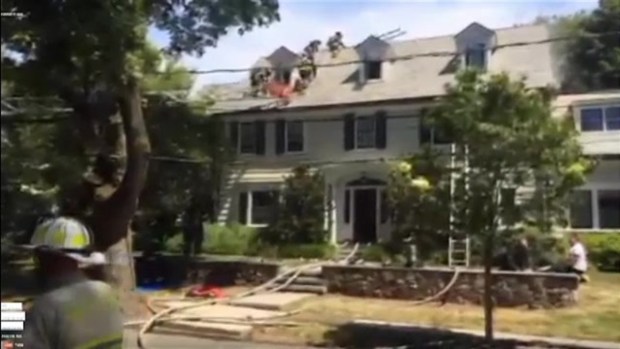





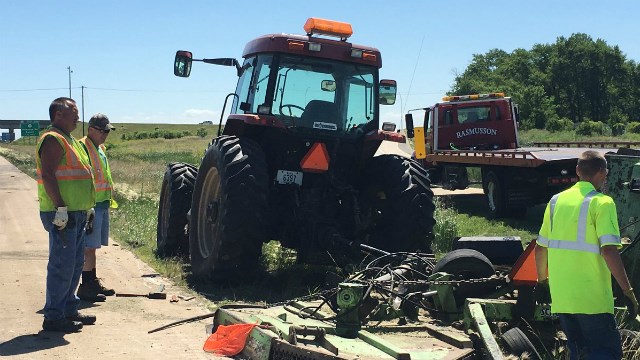
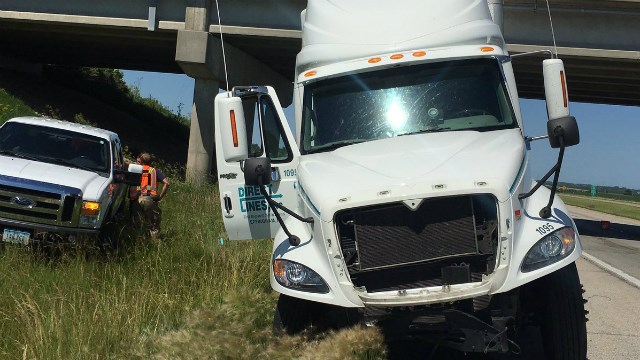
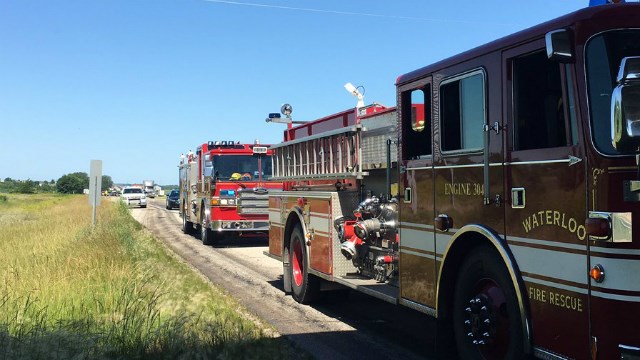
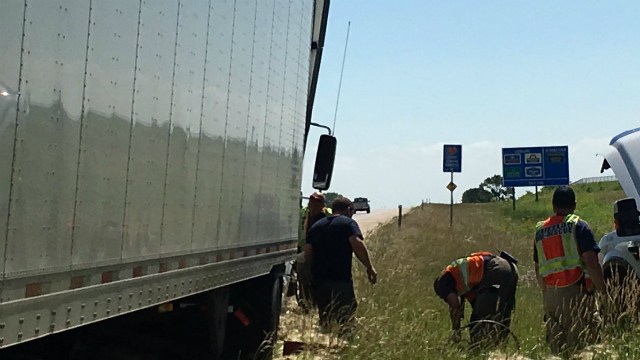
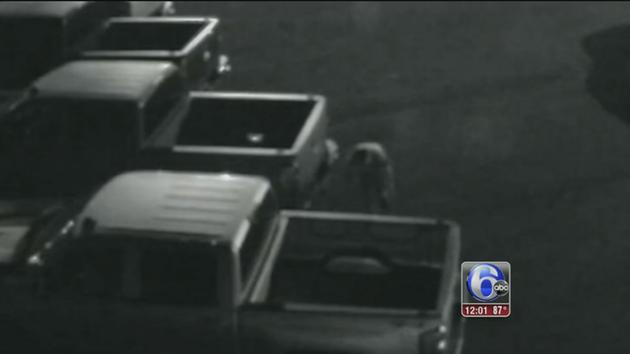

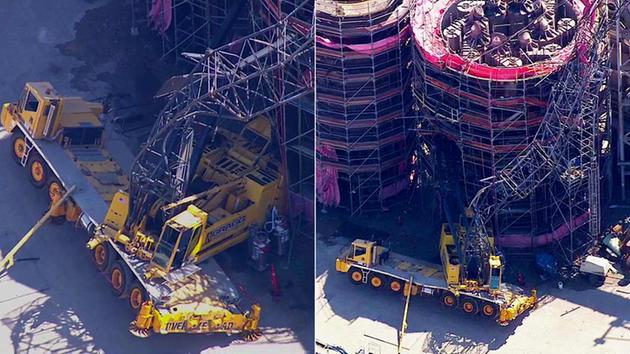



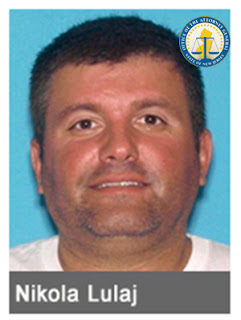



 WASHINGTON — The U.S. Coast Guard announced Monday new towing vessel regulations establishing new requirements for the design, construction, onboard equipment and operation of towing vessels.
WASHINGTON — The U.S. Coast Guard announced Monday new towing vessel regulations establishing new requirements for the design, construction, onboard equipment and operation of towing vessels. 


















